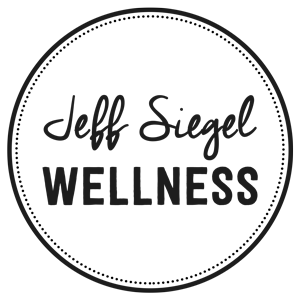Many people ask how they can be more mindful.
I suggest they simply slow down and pay attention to all aspects of their experience. Take a breath, and for a moment, let go. Then see what happens.
The common response is, “Easier said than done. I don’t have the luxury of slowing down. Life is really hectic. If I let go, I might drop the ball. There’s too much to get done.”
I agree. There is too much to get done. Work is endless, and there will always be social pressures to do more.
While addressing the social ills that pull us into this frenzied way of life is crucial, there is an additional question of how you are multiplying this stress by falling into a flurry of busyness.
Mindfulness is an antidote for modern multitasking and a mindset of time scarcity. Yet many people wrongly believe that being mindful will slow them down, make them unproductive, and somehow preventing them from getting ahead.
I beg to differ. Mindfulness empowers you to do everything you want and need, and perhaps even do it better.
Can You Be Mindful And Busy?
On the surface, mindfulness and busyness are a bit like oil and water.
When mindfulness says, “Pay attention to what is happening right now,” busyness says, “Let’s multi-task and keep moving.”
When mindfulness asks, “How can I embrace more of my experience in this moment?” busyness kicks in and says, “What else needs to get done?”
This tension between being and doing is nothing new. However, the conditions of modern society have ramped up the doing and left little space for nourishing our being.
Unless, of course, you create this space for yourself.
Dedicating time in your day to embrace who you are underneath all the doing is a foundational practice for your health. This is why developing a consistent meditation practice is so helpful. It protects the time and space in your life to reconnect with the world that exists inside, beyond, and despite, the busyness of your thoughts.
Mindfulness is about transcending the busyness burnout by being more as you are going through life.
In this sense, you can be mindful no matter how busy you are. There is always a layer of being running underneath and through of all your doing. It’s always there. You’re just not paying attention to it.
Mindfulness allows you to reconnect to this larger perspective grounded in your being. It creates a foreground-background shift, so you can become more aware of the subtleties and complexities of your experience beyond whatever shiny object your thinking mind is focused on.
Mindfulness For Busy People Is About Mastering The Foreground-Background Shift
When you can learn how to effectively and quickly toggle your attention between being and doing, you open yourself to a richer (and I’ll suggest more fulfilling) experience.
For example, take a moment in your day when you’re sitting on your couch, playing on your phone and your partner or roommate starts talking to you.
You’re knee-deep in social media and are simultaneously texting another friend. You’re highly absorbed in this multitasking and it feels stimulating. At the same time, you notice the person next to you trying to engage in conversation.
How can you be more mindful in this moment?
It’s not about giving up your phone and going somewhere to sit in deep meditation. It’s about expanding your awareness, if only for a moment, to include more than what your fingers, eyes, and thoughts are focused on.
Mindfulness is a tool that enables this shift. It is a practice of gathering more data on your human experience so you can choose what deserves your attention:
- What is your body telling you right now?
- What is your heart telling you?
- What is your relationship with the people around you?
- What else do you notice about who you are in this moment?
When you pause, relax, and then notice your thoughts, feelings, and physical sensations without judgment, you see a bigger picture of what’s actually going on for you.
Then you have the power to choose what you do next.
- Do you keep scrolling through your phone or do you respond to the person next to you?
- Do you keep your eyes focused on your screen or do you look up?
When you open yourself in this way, you are less likely to get tunneled in a myopic pattern of behavior. You have initiated a foreground-background shift, and created possibility for something new to arise.
The crux of being mindful during the busiest of days is your ability to execute these foreground-background shifts in any occasion. In order to do that, you need to learn how to let your attention focus and open and practice regularly.
Micropractices Are The Key To Mindfulness For Busy People
Foreground-background shifts are micropractices of letting go and momentarily toggling your attention away from doing and back to being.
One of my favorite micropractices comes from the Google Search Inside Yourself Leadership Institute, and it only takes 3 breaths.
- Breath 1) Notice your body and the sensations of air moving in and out.
- Breath 2) Relax your muscles and let go of tension (even just a little bit counts).
- Breath 3) Ask, “What is really most important right now?”
You can change out the question on breath three to best suit your needs.
Sometimes I ask, “What am I missing right now?” and get really quiet to see what arises.
Other times as I ask, “How much of me is really here right now?” and assess how scattered or centered I feel.
Ultimately, mindfulness creates choice by giving you more data, more awareness, to inform your actions.
There are endless powerful questions that can broaden your experience and help you reconnect with what matters most. Just follow the 3-breath framework to shift your momentum from doing back into a relationship with being.
The best part is that these brief moments can be inserted anywhere into your day. Foreground-background shifts are easy and quick, if you practice.
The Tabata Meditation: A Practice To Master The Foreground-Background Shift
If you really want to be mindful in your daily experiences, you need to strengthen the capacity to foreground-background shift and toggle from doing to being. This skill is best built through deliberate practice in the form of meditation.
Unfortunately, most traditional meditations don’t teach this well. They focus on only one of these two elements—focused attention or open awareness—and rarely give you a chance to develop both in tandem.
If you’re interested in a comprehensive meditation course, INLP offers a 12-module Mindfulness Certification Training for Individuals and Coaches.
To help you build your capacity to control your attention, I designed a “Tabata Meditation” that trains you to focus and unfocus your awareness. It takes the principles of interval training and applies it to a breath-focused awareness practice.
In short, it’s the perfect modern mindfulness for busy people.
Mindfulness For Busy People: How To Practice the Tabata Meditation
In this video, I explain the mindfulness for busy people practice and guide you so you can do it yourself.
The format is simple. You start with 20 seconds of focused attention on your breath followed by 10 seconds of deliberate un-focusing. You repeat this 20 seconds of focus, 10 seconds of unfocus intervals for a total of 8 times, or 4 minutes.
In the focused phase, place 100% of your attention on breathing. Notice as much as possible about the duration, quality, and nuance of your breath. Anything that’s not the breath, let it go.
During the 10-second “recovery” period, you just need to relax. Let your awareness broaden. Sense into your experience beyond your breathing. This is natural open awareness, free from stories and words.
If your eyes are open, take in your surroundings, but let the sights and sounds come to you. Don’t go grasping for them.
Notice that your mind may feel stiller than usual when you deliberately let go of focusing on your breath. You may begin to feel the freedom and ease of your mind when it’s unburdened with doing.
Remember there’s nothing you should be doing during this rest time. Just allow yourself to be and watch how your awareness will naturally move around.
Fitting the Tabata Meditation into Your Busy Life
This whole practice takes 5 minutes or less making it easy to slip in between meetings, on a bus, or even during long commercial breaks.
Here are some variations to help you personalize the practice:
- Interval Timing: Start with a 20:10 practice and adjust the intervals as you see fit. Sometimes 10 seconds feels too short and you don’t want to feel rushed. I find a 25-second focus and 25-second un-focus interval to be a really fruitful practice.
- Breath Retention: You can play around with holding your breath in or out during the unfocused period. Notice how this changes the quality of your attention.
- Counting Breaths: If you don’t have access to a timer, you can simply count your breaths during the focused awareness period. Taking 4 or 5 conscious breaths and allow your mind to relax. You don’t have to be strict with the timing. After a few moments of unfocused time, resume counting your breaths.
- Duration of Practice: The initial Tabata meditation is only 4 minutes, but depending on how much time you have, you can adjust the total number of intervals. Generally the more the better, but even a few focus/un-focus toggles are sufficient reps to build your mindfulness muscle.
Whatever variations you choose, the important part is the contrast between these two states—doing and not doing, foreground and background, focused and unfocused.
You want to have enough structure to stay engaged while also giving enough space to really enjoy both the focused and open awareness period without getting lost in either.
Mindfulness Allows You To Be Busy Without Feeling Busy
Remember mindfulness for busy people isn’t about giving up on all your tasks and chores. It’s about becoming a master at toggling your attention to broader and more inclusive perspectives. It is a skill that enables you to quickly zoom-out and see more of what is true for you.
With greater awareness comes choice. Then you can consciously reengage with your work from a place of intention rather than habit. Therefore, no matter how busy you are, you won’t feel like life is running you. You’ll be running life.
~ Jeff Siegel
Sign-up for my FREE 14-Day Learn To Meditate Course
If you are interested in 1:1 coaching together, schedule a 25min consultation call.


